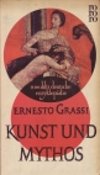Ernesto Grassi (1902–1991)
Autor von Rhetoric as Philosophy: The Humanist Tradition
Über den Autor
Ernesto Grassi was a professor of philosophy at the University of Munich and director of the Institute of Humanistic and Philosophic Studies.
Reihen
Werke von Ernesto Grassi
Heidegger and the Question of Renaissance Humanism: Four Studies (MEDIEVAL & RENAIS TEXT STUDIES) (1983) 10 Exemplare
Schiller : Wallensteins Lager + Die Piccolomini + Wallensteins Tod + Dokumente (1961) — Herausgeber — 6 Exemplare
Goethe : Römische Elegien + Venetianische Epigramme + Tagebuch der italienischen Reise (1961) — Herausgeber — 4 Exemplare
VICO Y EL HUMANISMO. ENSAYOS SOBRE VICO, HEIDEGGER Y LA RETORICA (Spanish Edition) (1992) 3 Exemplare
Folly and Insanity in Renaissance Literature (Medieval and Renaissance Texts and Studies) (1986) 2 Exemplare
Memoiren 1 : Bettina, Rom, Paris, Wien, Die Flucht aus den Bleikammern (1925) — Herausgeber — 2 Exemplare
Memoiren. 2 Lotterie und Kabbala ; Esther ; Köln ; Bonn ; Stuttgart ; Bekehrung und Verführung ; Voltaire — Herausgeber — 2 Exemplare
Philosophie des Altertums. Geschichte der Philosophie 1 (= rowohlts deutsche enzyklopädie) 1 Exemplar
Hans Jaenisch: Aquarelle Aus Amrum 1 Exemplar
Zugehörige Werke
Platon. Sämtliche Werke Bd. 1: Apologie des Sokrates, Kriton, Ion, Hippias II, Theages, Alkibiades I, Laches,… (1984) — Herausgeber, einige Ausgaben — 59 Exemplare
Menon, Hippias I, Euthydemos, Menexenos, Kratylos, Lysis, Symposion (1993) — Herausgeber, einige Ausgaben — 19 Exemplare
Getagged
Wissenswertes
- Geburtstag
- 1902-05-02
- Todestag
- 1991-12-22
- Geschlecht
- male
- Nationalität
- Italy
- Geburtsort
- Milan, Italy
- Sterbeort
- Munich, Bavaria, Germany
- Berufe
- philosopher
Mitglieder
Rezensionen
Dir gefällt vielleicht auch
Nahestehende Autoren
Statistikseite
- Werke
- 27
- Auch von
- 7
- Mitglieder
- 131
- Beliebtheit
- #154,467
- Bewertung
- 3.7
- Rezensionen
- 2
- ISBNs
- 29
- Sprachen
- 4
- Favoriten
- 1



